G5 Beijing -Kunming High -speed Mianguang Shaanxi section safety risk hidden dangers investigation and rectification measures for rectification measures
Author:Road Traffic Management Magazi Time:2022.06.21


The G5 Jingkun high -speed Mianguang Shaanxi section was opened to traffic in May 2011. In recent years, the gradual improvement of the protection rail protection level has greatly reduced the casualties and property losses in traffic accidents. Hidden dangers have been a stubborn illness for many years, especially the increase in traffic flow to make the problem of insufficient traffic capacity of individual parallel segments and insufficient service area capacity, and traffic accidents are discretely.
In order to thoroughly investigate the hidden dangers of road traffic safety and prevent and reduce the occurrence of traffic accidents, the Second Division of the Expressway of the Traffic Police Corps of the Sichuan Provincial Public Security Department invites the Sichuan Provincial Road Traffic Safety Association to form a road traffic safety risk hidden danger investigation expert work group, and The roads and related facilities of the high -speed Mianguang section and the Guangshan section were conducted on -site survey, and exchanged analysis with the road camp and relevant management departments, and put forward rectification suggestions. This article combed the investigation and rectification measures for key hidden dangers for reference.
1. Check the basic information of the road section
The G5 Jingkun high -speed Mianguang Shaanxi section is 222.25 kilometers in length, of which the Beijing -Kunming Expressway Mianguang section (Mianyang South Toll Station -Jinshan Toll Station) is about 113 kilometers. One interchange, 11 toll stations, and 2 tunnels. The G5 Guangshan section (the Golden Mountain Tunnel -Qipuan Tunnel) is about 109 kilometers in length. The whole section is constructed with a two -way four -lane highway standard. There are 2 large interchange interchange and 7 toll stations. The unnamed hub connects the highway of Guangyuan around the city.
The G5 Beijing -Kunming Expressway Mianuang Section of the Guanwangs was 1,118 road traffic accidents in 2021. Among them, there were 17 general program accidents and 5 deaths. The total number of accidents increased by 1.62%year -on -year. The G5 Guangshan section started 660 road traffic accidents throughout the year in 2021. Among them, there were 16 general program accidents and 5 deaths. The total number of accidents rose by 15.41%year -on -year.
2. There are problems and rectification suggestions
(1) Insufficient protection of safety islands of toll stations
As shown in Figure 1, the toll stations of the Science City are located at the half -slope of the downhill curve. From the starting point of the lower ramp to the toll booth of only 230 meters, the area of the ETC lane and the ordinary lane is too small, and the safety hazards are prominent.

Figure 1 Science City toll station
As shown in Figure 2, domestic toll stations and their safety islands are set up, but lack of effective protection measures for outdoor vehicles may cause damage to drivers and passengers of out of control. It has repeatedly caused a major casualties. For example, on November 3, 2018, the Lanhai Expressway Gansu Lanzhou South Toll Station out of control trucks and queuing to pay the vehicle, which killed 15 people and 36 people injured.
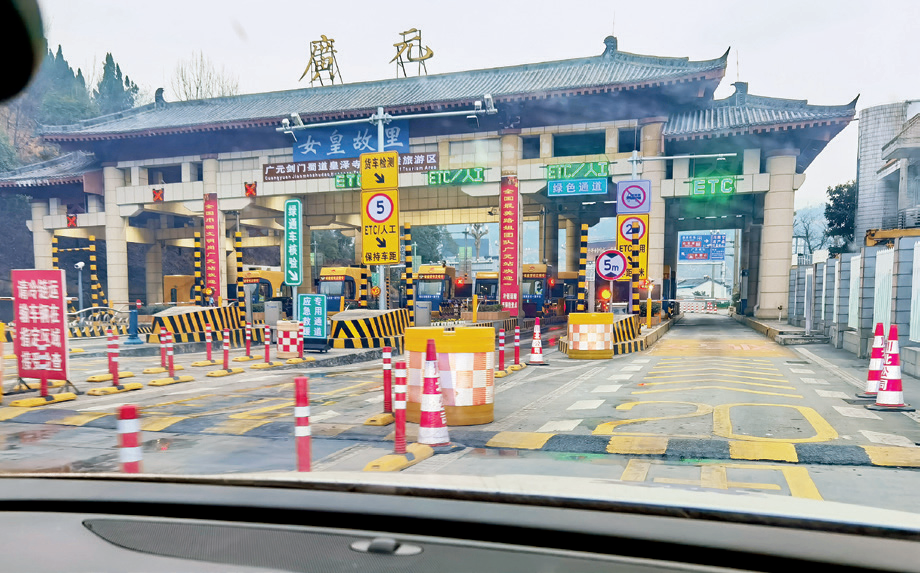
Figure 2 Guangyuan Toll Station
Rectification suggestions: The deceleration stalk of the scientific city toll station must be re -painted to remove the shrub to ensure the safety distance from the inside of the lower ramp curve. There are more than 3 anti -collision barrels in front of the safety island on the entrance of the charging channel, and more than 30 anti -collision barrels are placed in front of the safety island on the side of the large car. The inside of the collision barrel should be equipped with sand, and the distance between the barrel and the barrel should be kept distance. The collision barrel should meet the requirements of the national standard "Highway Anti-Anti-Barrel" (GB/T 28650-2012).
(2) Lack of warning and protection for welcoming surface obstacles
The front column side columns of the Xin'an Service Area have no yellow and black facade marks, such as the lack of warning to the driver.
Rectification suggestions: Article 5.2.2) of Article 5.2.2) of the "Design Specifications for Highway Traffic Safety Facilities" stipulates that "cross -line bridge, hear tunnel cord and tunnel hole on the road near the highway building limit area," On the facade of the wall and other obstacles, the central separation pier, toll island, physical safety islands or diversion islands, lamp seats, logo bases, and other three -dimensional physical surfaces that may pose a threat to driving safety should be set on the surface. Performance marks. "Article 10.15.2 of the" Highway Traffic Sign and Lighting Settings "(JTG D82-2009) stipulates that" the facade marks should be applied to a height of more than 2.5m from the pavement. The tilt line, the oblique line tilt angle is 45 °, and the width should be 15cm. When setting, the downward side of the downward tilt should be facing the lane. The facade marker on the constructor can be the same as it. "Therefore, the above -mentioned marking should be standardized by referring to the above provisions.
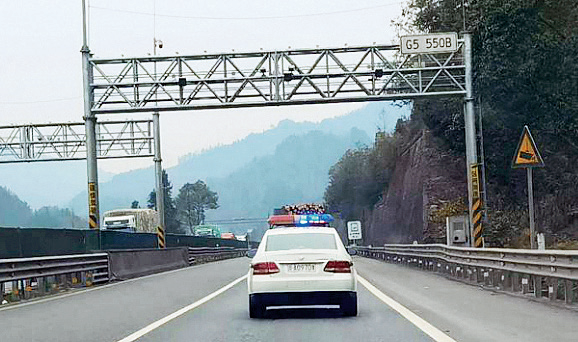
Figure 3 yellow black facade marks
(3) There are hidden dangers at the end of the fence
As shown in Figure 4, some sections of the guardrail are not extinguished, there are exterior sections but insufficient strength.
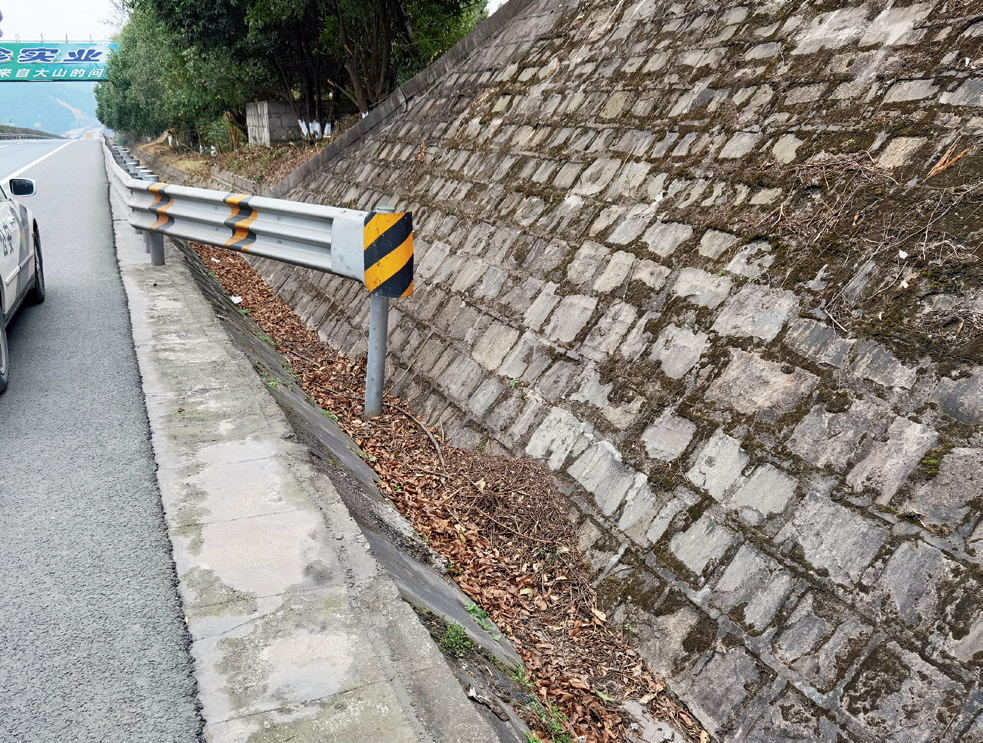
Figure 4 Insufficient exterior at the end of the guardrail
Rectification suggestions: Article 6.2.13 of the "Design Specifications for Highway Traffic Safety Facilities" (JTG D81-2017) stipulates that "the end of the guardrail of traffic exchange shall be extinguished or set up in accordance with the following methods:
1. Outside the width of the shoulder width of the soil road; when there is conditions, it is advisable to calculate the width of the net area.
2. At the time of filling the junction, it should be described and buried in the soil that does not constitute an obstacle.
3. Unable to abduct, highways, first -level highways, and secondary highways as trunk lines should be set up in accordance with specifications, or anti -collision pads in front of the fence end; Grade highways should be anchoring ending, and warning reminders or setting facade marks. "Details of the Highway Traffic Safety Facilities" (JTG/T D81-2017) Article 6.2.2, paragraph 4, has the following provisions for the guardrails of the traffic intersection: "1) Outside the width of the shoulder width of the soil road, outsourcing outflow The rate should not exceed the specified value below (Table 1) below (Table 1). The closer to the edge of the carbar, the smaller the value of the outflow. When there are conditions, it is advisable to exhibit exterior to the width of the calculated net area. 2) When the semi -rigid guardrail is abducted, the end should be reinforced. 3) When the dug -in junction is located, it should be built in the soil that does not constitute an obstacle. When the semi -rigid guardrail is buried in the soil, a certain length should be extended in the soil and anchor. "Therefore, according to the field situation, the end of the fence should be appropriately treated. For example, the end of the fence end is connected to the slope, and the reinforcement anchoring is added if necessary (see Figure 5), temporarily add anti -collision barrels, etc. 1 upstream guardrail endless extinguish rate
Figure 5 Add to enhance reinforcement anchoring

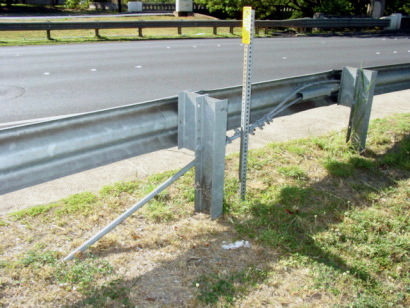
(4) The waveform guardrail and concrete fence are not connected
The K1666 section of the Longmen Bridge and other wave -shaped guardrails are not connected to the concrete guardrail.
Rectification suggestions: Article 6.2.14 of the "Design Specifications for Highway Traffic Safety Facilities" (JTG D81-2017) stipulates that "different protection levels or different structured fences should be carried out. It should not be lower than the lower protection level in the connection. "Article 6.3.8 of the" Design Specifications for Highway Traffic Safety Facilities "(JTG D81-2017) stipulates that" when the structure of the bridge guardrail and the roadbar fence is different, it should be carried out. Design of transition section. When the adjacent road base is not set up, the bridge guardrail should be processed. "Article 6.3.9, paragraph 2 of the" Highway Traffic Safety Facilities Design Rules "(JTG/T D81-2017) stipulates that" design speed When the structure of the highway bridge fences greater than 60km/h is different from the structure of the roadbed fence, the transition design should be carried out. The design speed is less than or or equal to 60km/h. The design should comply with the following regulations: the transition section should be set to set the end of the end wing wall or the semi -rigid guardrail on the rigid guardrail. Set independently in the base section. The wing wall of the end should be set up in accordance with the requirements of the roadbar fence. When a matching method is used, the road base guardrail should be strengthened, and the length should not be shorter than 10m. "The fence is connected as shown in Figure 6.
Figure 6 Section of the fence connection
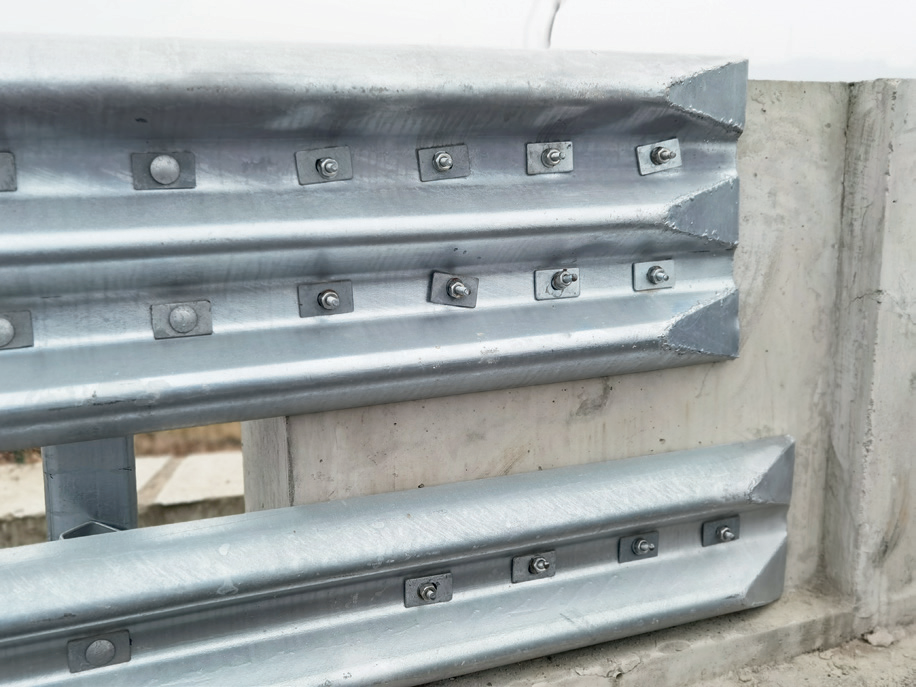
(5) There are many accidents before the tunnel entrance
The K1583 Guanzi Tunnel Cisng to the entrance and the K1593 Xingjiagou Tunnel Crimeline before the entrance. The tunnel induction signs are not obvious.
Rectification suggestions: Install the door frame -type LED display screen at the entrance of the Guanzi Tunnel and the inlet of the Xingjiagou Tunnel, respectively. At the same time, the F -shaped intelligence board is installed on the downhill section to display the speed limit value of the road section to strengthen the induction prompts. The lane interval between the sections and the edge line of the road is changed to the oscillating marking line. The downhill section is added to the road section of horizontal and longitudinal deceleration, and the road section is added to the road section Essence Increase the speed measurement range of 16km roads in K1584-K1660.
(6) Diversion triangle area safety measures are not perfect
As shown in Figure 7, although the highway diversion triangle area has buffer facilities, it is not standardized and the safety protection effect is greatly reduced.
Fig
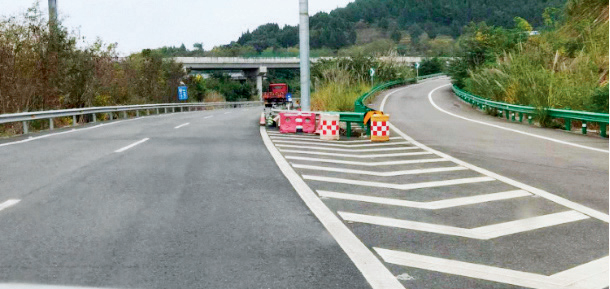
Rectification opinions: "General Specifications for the Design of Highway Transportation Projects and Facilities Along the Line" (JTG D80-2006) Article 5.9 Anti-collision pads have the following provisions, "the main lines of highways, and the end of the ramp exit should be set up with anti-collision pads. . The end of the cross -line bridge in the highway cross -line bridge, the central separation of the parts of the parts, etc. should be set. "Article 6.5.1 of the" Design Specifications for Highway Traffic Safety Facilities "(JTG D81-2017) should be set. The principle of facility setting has the following requirements. "The main line of the highway line, the distribution end, and the entrance of the tunnel shall be provided with a guide -oriented anti -collision pad. "The plane fabric of the collision pad is consistent with the linear lines of the highway. When the front end of the main line diversion end, ramp exit, or toll station derives island, the axis of the anti -collision pad should be overlapped with the central line of the road route on both sides of the collision pad. And coordinate with other highway facilities in the location. "Article 6.5.2 of the" Design Specifications for Highway Traffic Safety Facilities "(JTG D81-2017) has the following provisions:" Prevention The protection level of the collision end and the anti -collision pads is shown in the following table (Table 2), which should be selected according to the design speed of the highway. Due to factors such as operating speed and traffic, it is easy to cause more serious collision consequences. The protection level of the collision end and the anti -collision pad. "Therefore, the anti -collision pad (see Figure 8) and the elastic warning column should be updated.
Table 2 Anti -collision end and anti -collision pad protection level applicable conditions
Figure 8
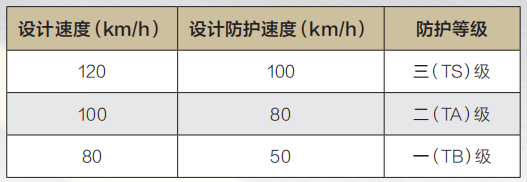
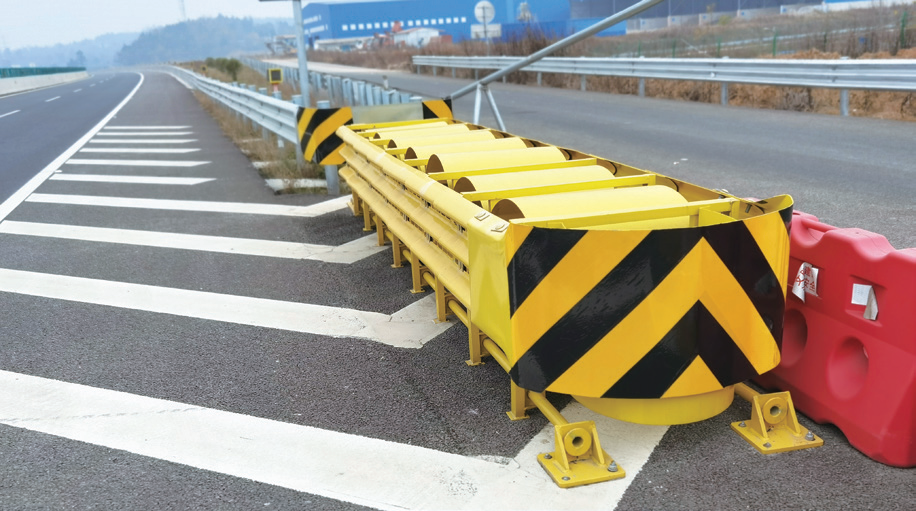
(7) The safety facilities of the G5 Guangshan section of the G5 Guangshan section have multiple deployments of the G5 Guangshan section, and there are many sections of the accident. Take the K1576-K1553 Jinshan Road section (out of the Sichuan direction) as an example. 19km, downhill and curve superimposed. It is a typical mountain highway, with many rear -end accidents. Some curve sections of Golden Mountain have set up deceleration lines and prohibit cross -road boundary lines, but some road sections of the oscillation deceleration marking line aging and oscillation lines are set to be too close to the bending road section. Hidden safety hazards are prominent.
Rectification suggestions: For the long -term downhill and the hidden dangers of the curve section of the Golden Mountain Road section, the following measures are taken: adding a speed measuring feedback device in the front 50M position in the front of the Golden Mountain Longshan Mountain, and the speed of the vehicle driving in real time; All curve and downhill sections of the mountains are added with horizontal oscillation deceleration and vertical oscillation deceleration marking lines to be updated in a timely manner for the aging and wear of the oscillation line. Line separation lines; add speed limit signs, easy slippery signs, and accidents at the danger point; repeat the continuous downhill signs every 3km on the downhill section and inform the slope of the slope; Steep slopes; set linear prompt signs according to the actual situation, such as the slogan of the sloppy downhill according to the actual situation.
(8) Insufficient capacity of Jianmen Pass service area
The capacity of Jianmen Pass service area (in the direction of entering and leaving Sichuan) is small, the high traffic flow of Beijing -Kunming high -speed traffic is large, and the vehicles are easy to line up to the main line. The Jianmen Pass service area is about 85km from the previous service area Xin'an Service Area, about 76km from the next service area neutron service area, and the distance is far away. There are no other parking areas and other service facilities along the line.
Rectification suggestions: Article 13.3.1, paragraph 13.3.1 of "JTG D20-2017) stipulates that" the distance between the service areas should be 50km, the distance between the parking area and the service area or the two parking areas should It is 15 to 25km. "Article 10.3.1, paragraph 1 (JTG B01-2014) stipulates that" the highway should set up a service area as the first and second-level highways of the highway. The average spacing of the district should be 50km; when the town along the line is sparsely distributed, and the supply of water and electricity is difficult, the service range can be increased. "Therefore, it is recommended to add a service area or parking area in an appropriate location; The distance between the service area is greater than 25km. At the first 3km of the previous benchmark point, two or three continuous service areas can be set at 3km; a notice sign is added at 500M or the road section of the service area.
(9) The traffic organization in the service area needs to be optimized
As shown in Figure 9, the ramp arrows of the Xin'an service area are not standardized, and the arrows directly induce the vehicle to go straight. The right turn of the intersection is limited to the vehicle's right to turn. 80km/h; foreign vehicles often accidentally pass through the right -handed intersection; the location of the gas station is near the entrance of the service area, and the queue channel is insufficient. The insufficient capacity of several service areas such as the neutron service area and the Jianmen Pass service area caused the vehicle to spill on the import and export ramp to park.
Figure 9 At the entrance of Xin'an Service Area
Rectification suggestions: Adjust the deceleration logo position, add a right -to -right trailer, labeling and deceleration lines at the entrance of the ramp, cancel the dotted line on the right turn and press the right turn canal, and set the right turn arrow marker; The queuing and multi -channel service mode can improve the refueling efficiency of 3 to 5 times; the gas station is equipped with a safety officer to guide the refueling vehicle to queue up and warn the vehicle to reduce the vehicle safely; add a parking area to overnight vehicles in front Vehicles; conducting the feasibility study of the expansion of the Xin'an service area.

(10) G5 Beijing -Kunming high -speed Mianguang Shaanxi section 120km/h speed limit is high
The national standard "Road Transportation Labeling Line 5: Restricting Speed" (GB 5768.5) 5.2 stipulates that "the speed value of the speed is based on the speed value of the road design, which can increase 10-20km/h, but the traffic engineering argument should be performed." The original design of the original design vehicle of the G5 Beijing -Kunming high -speed Mianguang Shaanxi section is 80km/h. The speed up to 120km/h is significantly exceeded the GB 5768.5 regulations, and the road section is 120km/h speed limit and the tunnel 80km/h speed limit. ACCIDENT.
Rectification suggestions: For the 120km/h speed limit section, in accordance with the GB 5768.5 and industry standards "Design Specifications for Highway Speed Spelling Sign" (JTG/T 3381-02-2020), organize the speed survey of the traffic. According to the basis, organize experts to demonstrate, re -determine the speed limit regulations of the road section, evaluate the feasibility of the speed limit of the unified road section of 100km/h, the tunnel speed limit 80km/h scheme, reduce the speed changes of the road section, and guide the running of the vehicle smoothly.
Authors and units in this article: Guo Nan, Deng Yao, Zhang Can, the Second Division of the Sichuan Traffic Police Corps Highway; Zhao Suyang, Sichuan Jinrui Smart Transportation Engineering Design Co., Ltd..
Main technical basis:
National Standard "Road Traffic Logo and Light Line" (GB 5768.1 ~ 7)
Industry Standard "Highway Engineering Technology Standards" (JTG B01-2014)
Industry standard "Highway route design specifications" (JTG D20-2017) industry standard "General Specifications for Highway Transportation Engineering and Facilities Along the Line" (JTG D80-2006)
Industry standard "Design Specifications for Highway Traffic Safety Facilities" (JTG D81-2017)
Industry standard "Design Details of Highway Traffic Safety Facilities" (JTG/T D81-2017)
Industry standards "Highway Traffic Logos and Lights Setting Specifications" (JTG D82-2009)
Industry standard "Highway Speed Spelling Specification Specification" (JTG/T 3381-02-2020)
This article published in "Road Traffic Management" magazine 2022, No. 6
Review: Li Xiuju / Li Jiaxin
Edit: Li Huiqi
- END -
Zhaoqing Meteorological Observatory issued thunderstorms and windy yellow warnings [III class/heavie
Zhaoqing Meteorological Observatory issued a thunderstorm and yellow warning signal at Duanzhou District and Dinghu District at 16:07 on June 10, 2022.
Qingyang detachment jointly carried out the safety inspection of fire channels for residential residential communities

In order to effectively implement the work of opening up the life channel, we will...